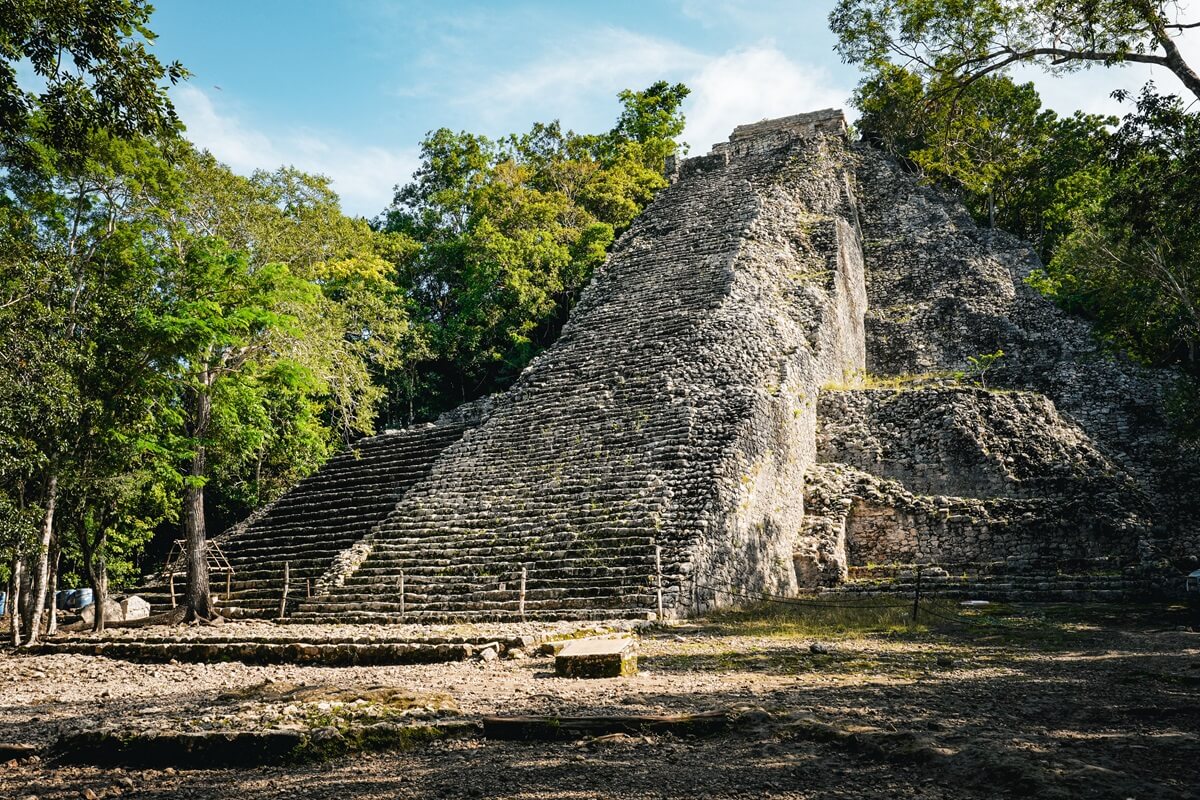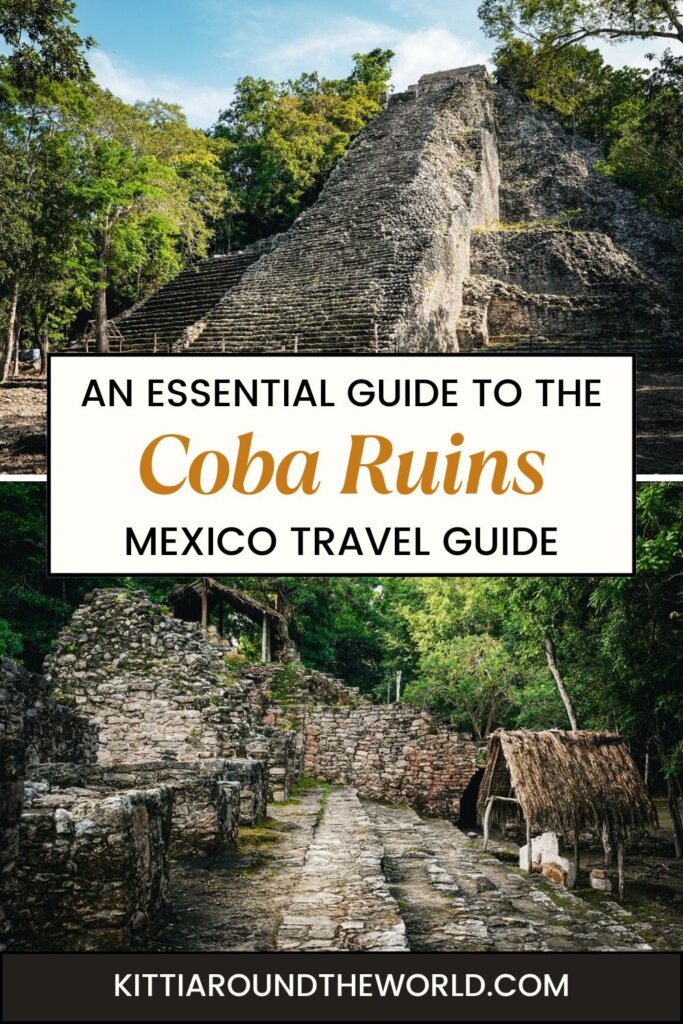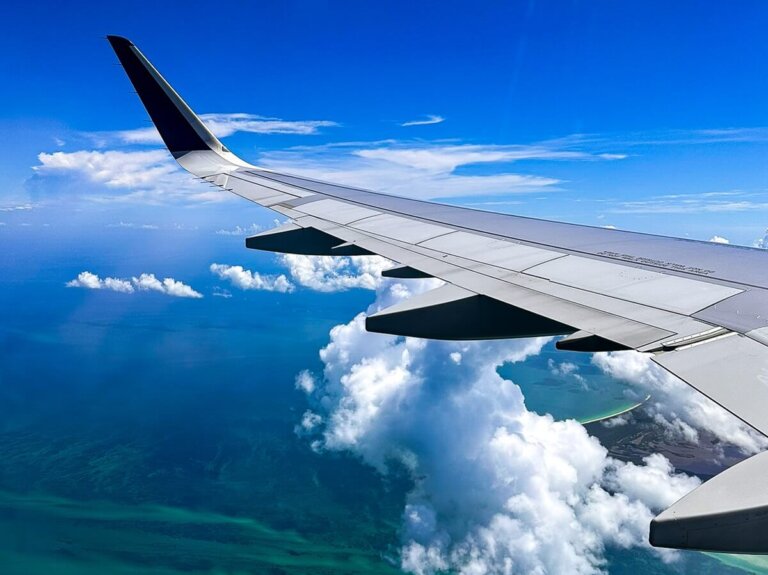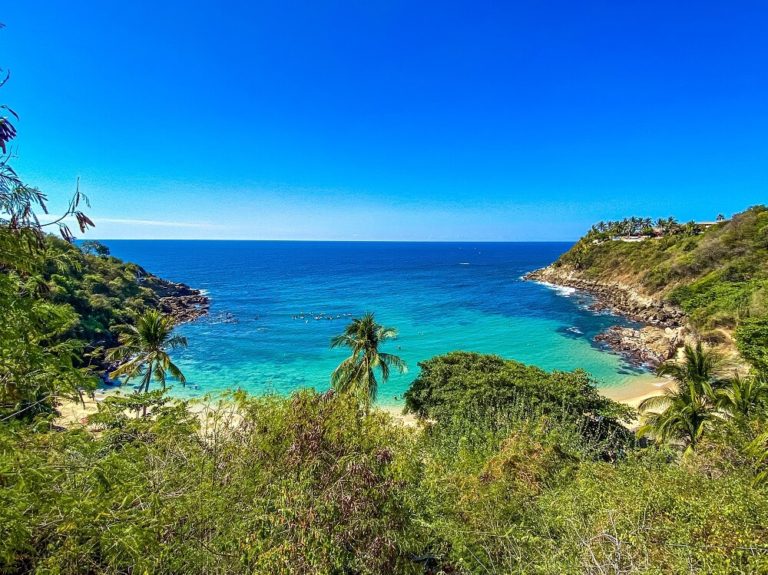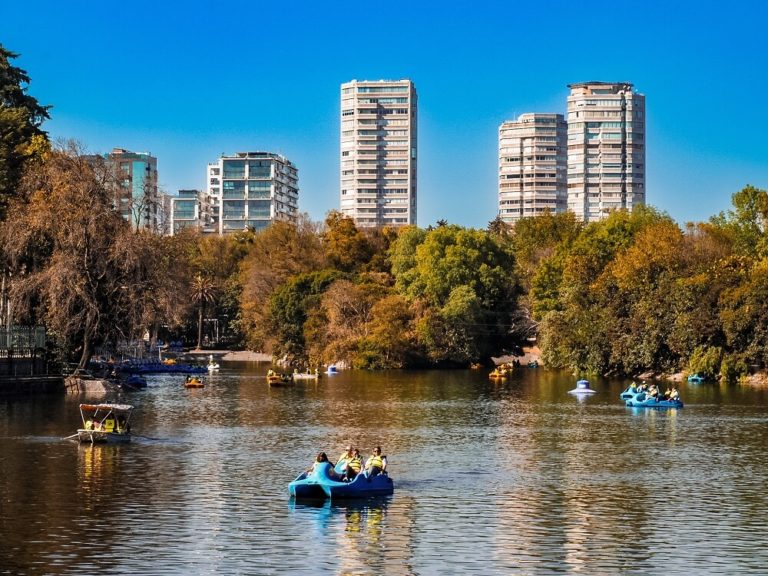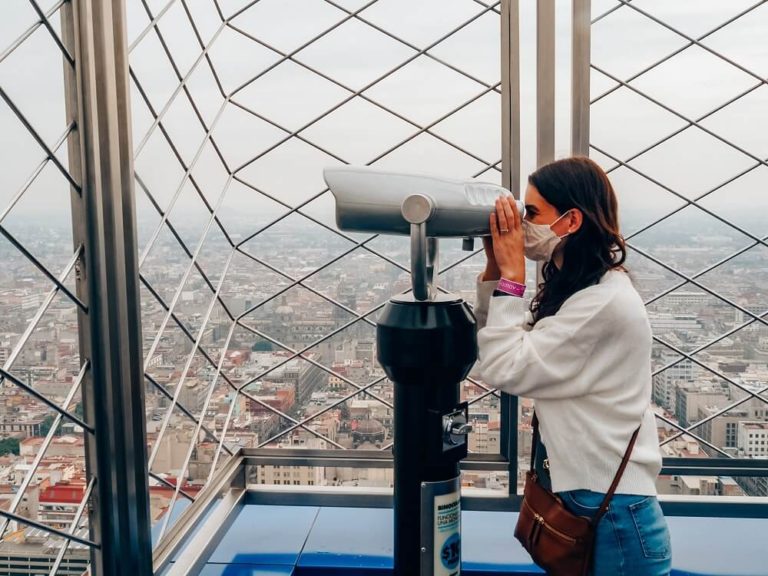Visiting the Coba Ruins and Cenotes: All You Need to Know
If you’re visiting either Tulum or Valladolid, or are just planning a road-trip around the Yucatan Peninsula of Mexico, then visiting Coba Ruins should be on your itinerary. This archeological site is located about half-way between Tulum and Valladolid, in close proximity to Chichen Itza, one of the modern wonders of the world, and to Tulum Ruins, the only Maya city that was built on the coast.
We visited Coba Ruins from Tulum and had a lovely time walking through the jungle and seeing all the excavated structures in the ancient Maya city. In this guide we’ve summarised all the essential information you should know prior to your visit to the Coba Ruins. We’ll detail all the different ways you can reach the site and get around it. You’ll also find information about entry fees, opening times and when the best time of year to visit is. Lastly, we’ll tell you how to visit some of the nearby cenotes for a refreshing dip after touring the ancient ruins in the humid jungle.
If you’d like to see our experience at the Coba Ruins then make sure to watch our dedicated Tulum video, which also includes additional things to do around the town. If you’re interested in more Mexico content, check out the Mexico Playlist on our YouTube Channel.
Disclosure: This post may contain affiliate links, which means we may receive a small commission if you click a link and purchase something. Clicking these links won’t cost you anything, but it will help us to keep this site up and running! Learn more about our affiliate policy.

About Coba Ruins
Coba is an ancient Maya city, located between Tulum and Valladolid in Quintana Roo on the Yucatan Peninsula. The site is surrounded by two lagoons, Lake Coba and Lake Macanxoc. Unlike many other Maya sites, the city actually retains its original Maya name, Ko’ba, which translates to ‘uneven water’. It is believed that Coba was one of the most important city-states on the Yucatan Peninsula. During it’s heyday it had a population of at least 50,000.
Coba extends around 80 sq kms and, although many of the sites mysteries have yet to be uncovered, many of the major structures have been excavated and are open to the public. This includes one of the tallest pyramids on the Yucatan Peninsula, called Ixmoja, found within the Nohuch Mul group. In addition, the site is also home to one of the largest networks of stone causeways (Scabe) in the Maya world.

How to Get to the Coba Ruins
The Coba Ruins are located approximately 47 km (29 miles) northwest of Tulum and 60 km (37 miles) southeast of Valladolid. There are multiple ways you can reach the archeological site from either place. We visited from Tulum as it is a little bit closer.
By Scooter
If you’re visiting from Tulum, you could consider hiring a scooter to reach Coba Ruins. A scooter is one of the best ways to get around Tulum, so renting one for a few days would allow you to visit multiple places around the town.
It may take a bit longer to drive to the ruins, but you can leave early to avoid the heat and the crowds. With a scooter you’ll also be able to reach the nearby cenotes easily.
There are many scooter rental shops in Tulum, with IBike Tulum being one of the popular ones.
By Hire Car
The quickest way to get to Coba Ruins from either Tulum or Valladolid is by hire car. We ended up renting a car for a day. Having our own vehicle gave us the freedom to set off as early as we wanted to to beat the heat and the crowds. It was also easy to visit the cenotes near the ruins.
There are many car rental places in town, including both well-known international agencies and smaller local ones. We found really positive reviews for America Car Rental, so we just went with them. However, if you wish to secure a vehicle before your trip, check out DiscoverCars where you can find the best rates because they compare local, national, and international companies.
Note. Parking at Coba Ruins is an extra 60 MXN pesos for the day.
Stay connected with Holafly eSIM. (Get 5% off with code ‘KITTIAROUNDTHEWORLD’)
With an Organised Tour
If you want to learn more about the Coba Ruins then consider booking an organised tour. Whilst there were a few information boards on site, we had to do some extra reading after our visit. A guide would be able to explain in much more detail about the Maya, the site’s history and the structures.
Many organised tours include a variety of other activities, which is perfect if you’re short on time.
- Coba Ruins and Punta Laguna Nature Reserve Tour. This tour, operated by the well-reviewed Mexico Kan Tours, offers a small-group visit to Coba with a bike ride followed by a canoeing and ziplining adventure in Punta Laguna Nature Reserve. Lunch is also included.
- Coba Ruins, Chichen Itza and Cenote Ik Kil Tour. Operated by Excursiones Riviera Maya, this tour includes a visit to Chichen Itza and Cenote Ik Kil as well as the Coba Ruins. It also includes breakfast and lunch.
- Coba Ruins, Tulum Ruins and swimming in cenotes. This tour, operated by Sat Mexico Tours, offers a visit to both Tulum and Coba Ruins, as well as some cenotes. Lunch is also included.
If you wish to learn more about the site without committing to an organised tour, you can always just hire a guide at the entrance. This will give you some freedom to do other activities in your own time.
By Public Transport
You can also get to Coba Ruins either by colectivo (shared minivan) or with a bus. Whilst we don’t have personal experience in taking either, there is a colectivo stop (Tulum – Coba) on the corner of Tulum Avenue and Calle Osiris Norte. As with most colectivos in Mexico, there probably won’t be a set timetable and you’ll likely have to wait until they have enough passengers to start the journey.
The other alternative is to take the bus which will have a schedule, but it’s very infrequent. The bus departs from Terminal Autobuses Tulum ADO. You can either take the ADO bus or the Mayab bus, which is the ‘second class’ branch of ADO. Note that you’ll be on the Tulum to Valladolid bus.
Read next: How to get around Mexico by bus

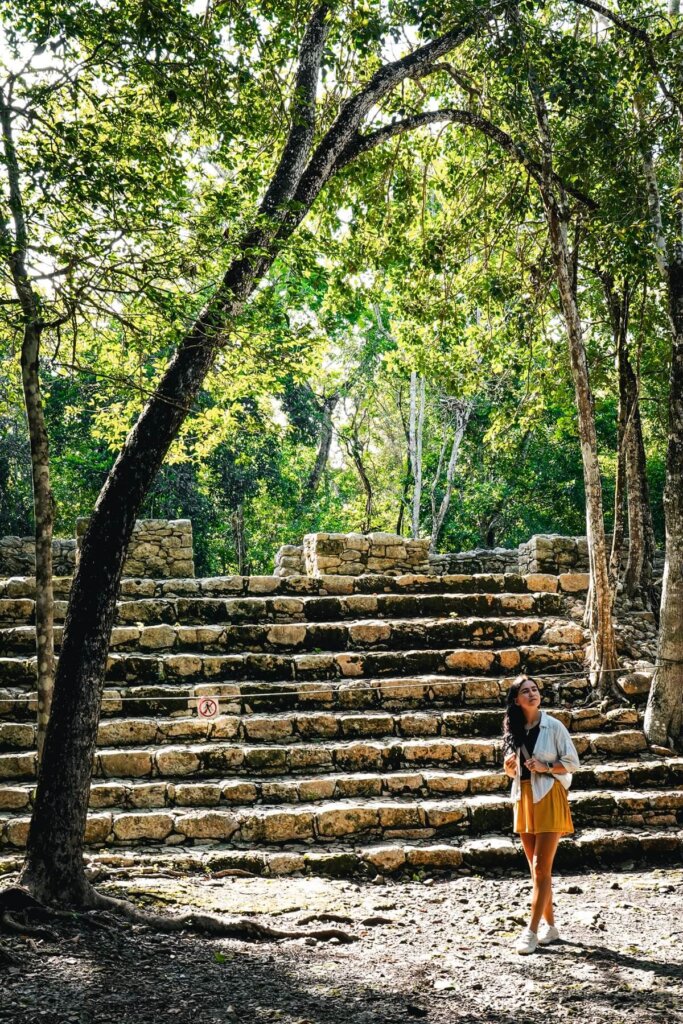
Coba Ruins Entry Fee and Opening Times
The archeological site is open every day from 8AM until 5PM. Note that the last entry is at 4PM.
Just like when visiting the Tulum Ruins, you’ll need to pay for two separate tickets to enter the Coba Archeological Zone: one to enter the territory of the local communities, called Ejido, and one to access the ruins themselves.
Access to Ejido de Coba is 100 MXN pesos per person. We had to pay this upon entering the car park, where we also paid 60 MXN pesos for parking.
Once we’d parked the car we could buy our entry to Coba Ruins, which is 95 MXN pesos per person.
Just like at many sites in Mexico, if you have a professional camera, you’ll need to pay a small fee to use it.
At the entrance, you can hire a guide for an extra cost if you want.


How to Get Around Coba Ruins
We’d like to highlight that the main structures are scattered quite far apart around the archeological site, which we didn’t realise before we got there. There are three ways you can see Coba Ruins:
- On foot;
- By hiring a bike and cycling around; and
- By hiring a cycle rickshaw, or bici-taxi (two-seater bike) with a driver.
The ruins are located quite far apart from each other and before you know it you can easily complete a 5km long walk, or more. For us it wasn’t an issue, since we enjoy walking, but we appreciate that not everyone would enjoy seeing Coba Ruins on foot. However, the advantage of walking is that you may be able to spot more wildlife and can really appreciate just how large this ancient city was. Of course, it would take you longer to get around, and based on our experience, walking in the midday heat and humidity isn’t much fun. Not to mention the bugs that were eating us alive!
So, if you’d like to get between the main points of interest quicker, then consider hiring a bike. The price we saw for bike rental was 65 MXN pesos per bike. They had bike stands around the structures and signs indicating where you can and cannot enter with your bike.
Lastly, if you don’t fancy pedaling around yourself, you can also just hire a cycle rickshaw, or bici-taxi. It comes with a driver who will take you around the site. The bikes are designed to fit two people at the front with the driver pedalling at the back, so you have an unobstructed view. We got offered these tours for around 100 MXN pesos per person.
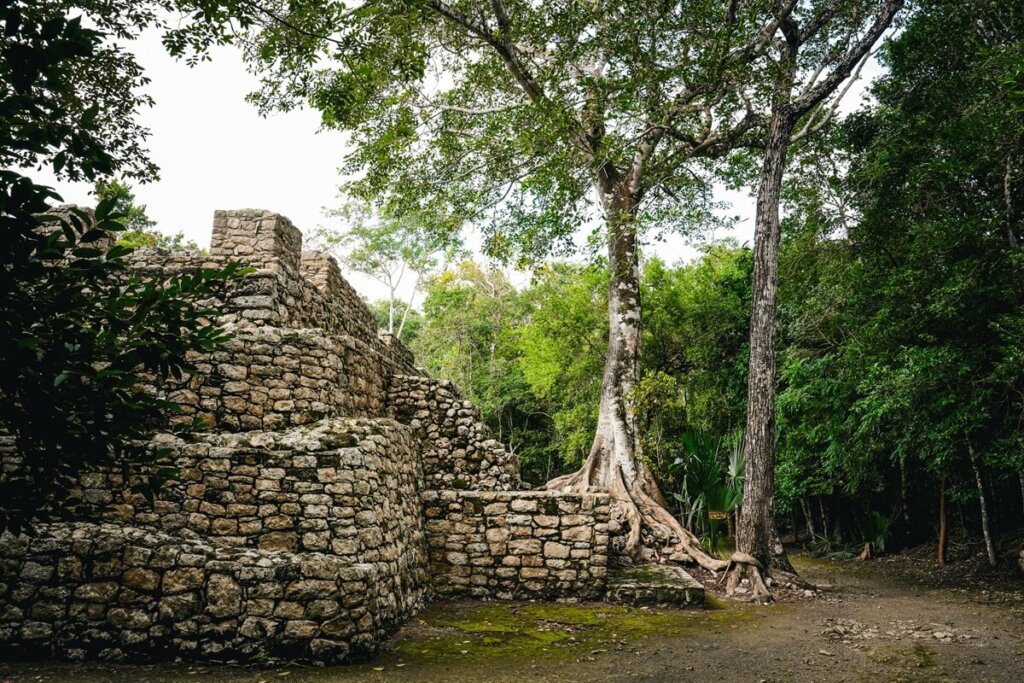
Best Time to Visit the Coba Ruins
The dry season is between December and April, when temperatures are much more pleasant. However, this is also the peak tourist season, so the site might be more crowded. May to October is the rainy season. During this time it is much hotter and more humid.
Let’s not forget about the hurricane season which is between June and November. It peaks from August to October. We actually visited in September and it was very hot and humid, with a few hurricanes passing close to the peninsula. We actually got caught in a very heavy downpour driving back to Tulum. If you visit during the hurricane season, you’ll definitely experience fewer crowds but you’ll also have to be more alert and keep an eye on local / international newsfeeds and forecasts.
Overall, if you want less crowds and generally good weather then try to visit Coba either in May or November.
Top Tip. You should never travel without travel insurance. There are many different companies out there offering different levels of coverage depending on your needs. We personally use SafetyWing which offers coverage at a much more affordable price than most other insurances.
We also suggest visiting on a weekday if possible. Weekends are usually busier, especially on Sundays when Mexican citizens and foreign residents can visit the site free of charge.
Lastly, we also recommend getting to the ruins earlier in the morning. The 8 AM opening time means that you can avoid walking around in the hottest part of the day. In addition, if you’re visiting on your own, you can also avoid the organised tour groups arriving to Coba from around 10-11 AM.
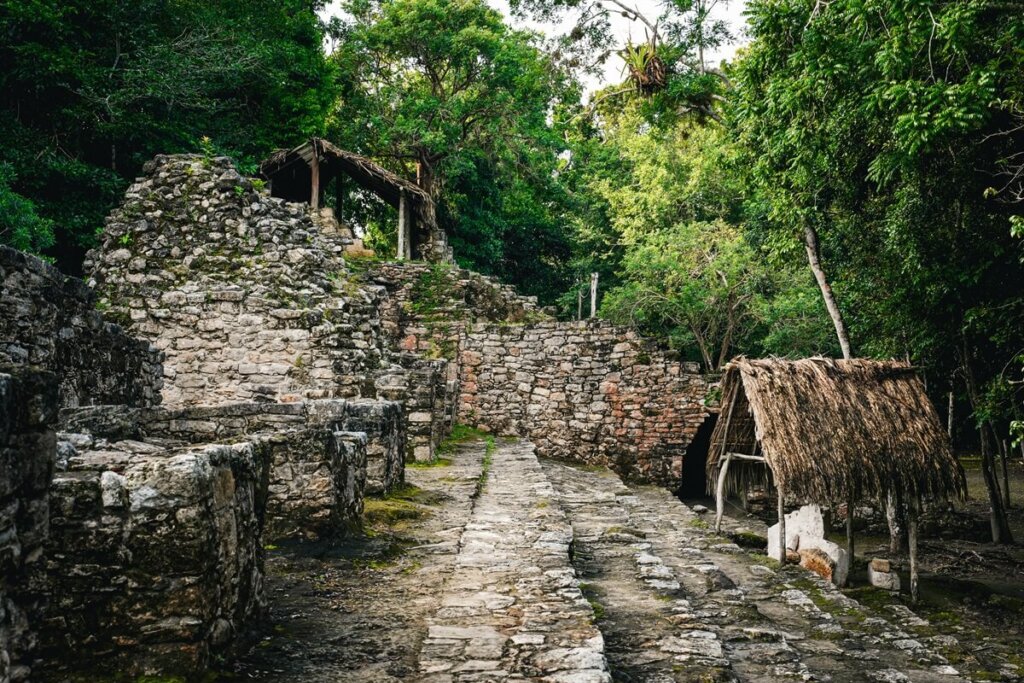
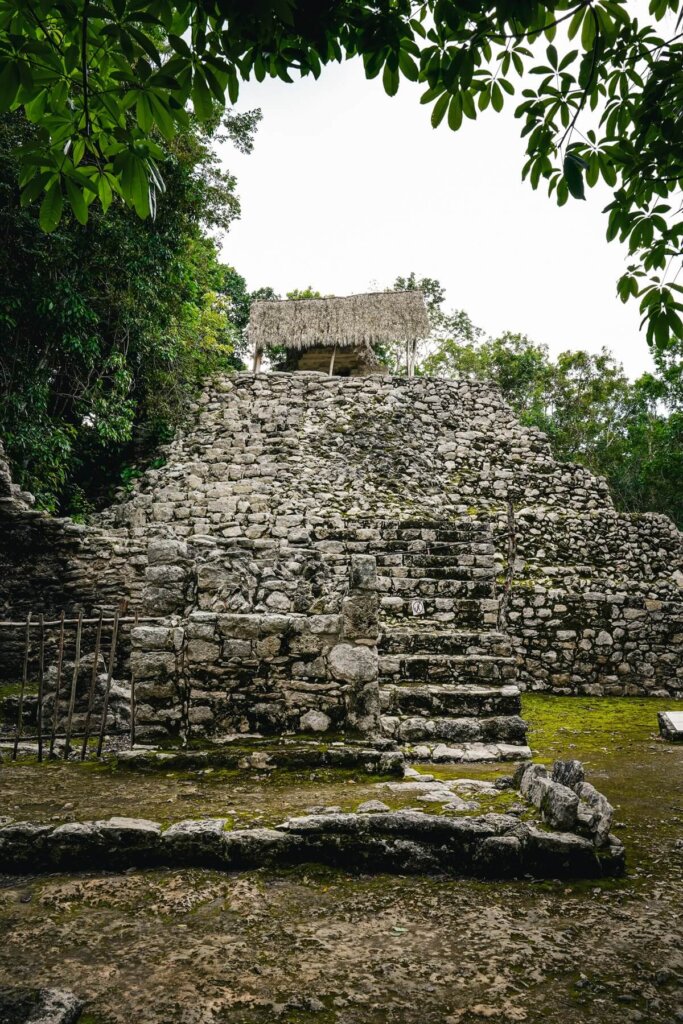
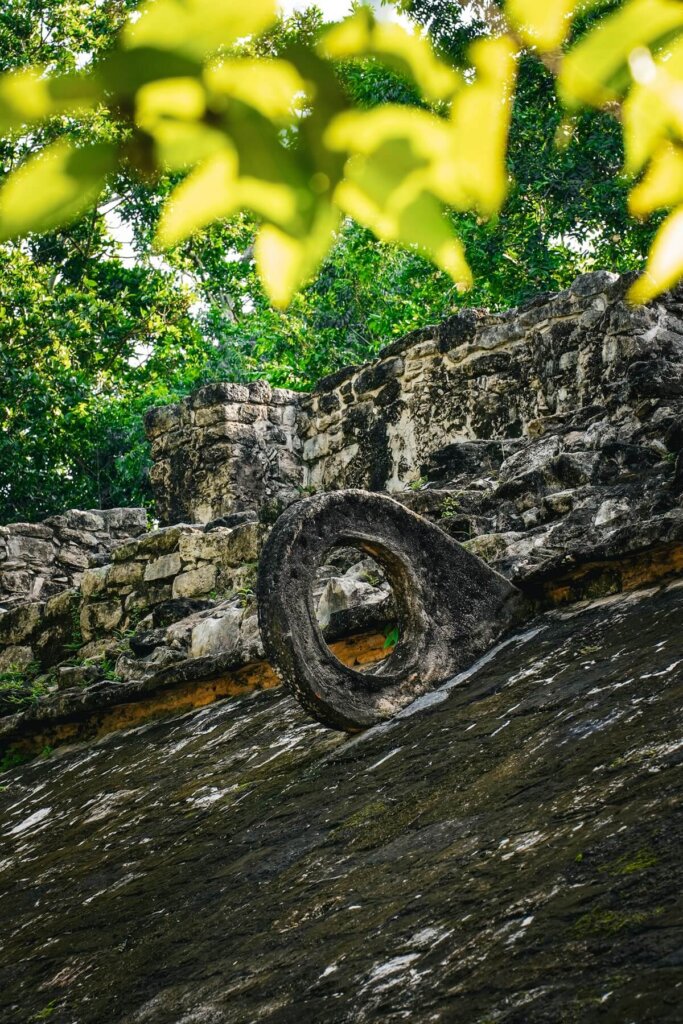
Highlights of Coba Ruins
Only a small portion of Coba has been restored and opened to the public, though this contains all the major structures.
Note. Before we list the best structures within the site, we’d like you to note that you’re not allowed to climb on top of the pyramids any longer. This shouldn’t take away from your visit though and we still very much recommend visiting Coba Ruins.
Top Tip. Make sure to have good bug repellent on you if you don’t want your legs to be eaten alive by bugs.
Coba Group
The first structures we came across were the Coba Group. This is the oldest group within Coba, with the main complex being the Acropolis. The Acropolis consists of multiple structures including La Iglesia (the Church) and one of two ball courts (Ball Court 1).
With a height of 24 m, La Iglesia is actually the second tallest pyramid within Coba. However, our favourite structure within this group was Ball Court 1 where we could see two original rings imbedded into the walls.
From the Coba Group we had to walk a fair bit to get to the other areas of the site.
Scabe
Coba is home to the largest network of ancient stone roads (sacbe) in the region. They lead in all directions from the Nohoch Mul Pyramid, connecting all parts of the Maya city. Coba had about 50 of these roads, although less than half of them are open to visitors.
Group D
This next group contains the Paintings Group, a ball court, the Xia’be Plaza and other structures. One of the most interesting structures is the Temple of the Paintings, which has a small temple with painted murals on it.
Macanxoc Group
Following one of the scabes we ended up at the Macanxoc Group. There are several structures within this area including many stelae and altars.
Nohoch Mul Group and Ixmoja Pyramid
The highlight of the Coba Ruins is the Nohoch Mul Group, although it’s the furthest away from the entrance. In Maya ‘Nohoch’ means ‘big’ and ‘Mul’ means ‘mound’. Within this group you’ll find the Ixmoja Pyramid. With a height of 42 m, it’s the tallest structure within the site and also one of the tallest pyramids on the Yucatan Peninsula.
Visitors used to be able to climb to the top of this pyramid and could enjoy some panoramic views of the surrounding jungle. However, you’re no longer allowed to climb the structure.
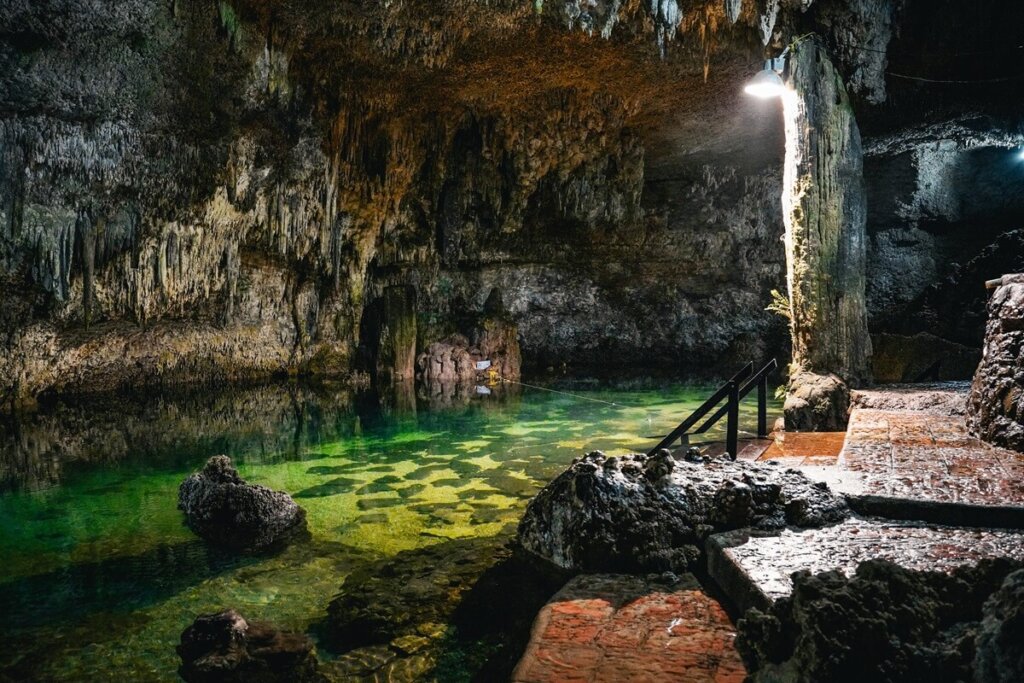
How to Visit the Cenotes Near the Coba Ruins
The best way to end your visit to Coba Ruins is by cooling down at the nearby cenotes. There are three completely enclosed underground cenotes you can visit:
- Tamcach-ha
- Choo-ha
- Multum-ha
They’re located about 5-6 km to the east of Coba Ruins, so ideally you would need a scooter or a hire car to reach them. Alternatively, if you have a bike and don’t mind cycling you can get to the cenotes that way too. Some tours also include a visit to these cenotes after visiting Coba Ruins.
Depending on how much time and money you want to spend, you can visit just one or all three cenotes. Although you have to pay 100 MXN pesos for each one, even if you visit all three, it’ll still be more affordable compared to one entry to a popular cenote like the Gran Cenote near Tulum.
Since we wanted to stop at a few more places on the way back to Tulum, we decided to just visit Cenote Choo-ha. It was a great decision because we got caught in a heavy downpour as we were driving back, so if we’d left later from Coba we wouldn’t have been able to enjoy those other sites before the rain hit.
Final Thoughts on Visiting the Coba Ruins and Nearby Cenotes
Although Coba Ruins wasn’t the most impressive Maya city we’ve ever visited, it was still a beautiful archaeological site to explore. It was definitely a site where the structures are located quite far apart. We didn’t mind walking around on foot, even though it started to get really hot towards the end of our visit. Getting there by rental car also allowed us to spend as long at the ruins as we wanted to and then quickly reach the nearby cenotes to cool down.
Have you ever visited the Coba Ruins before? If not, let us know in the comments what your preferred method of getting around would be: on foot or by bike?

